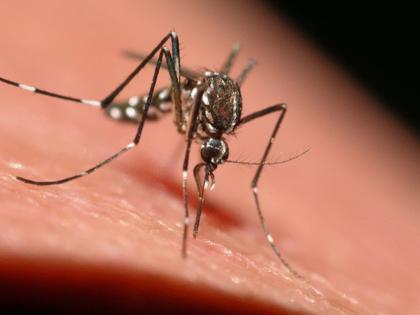Travelers from Cuba are bringing a virus known as sloth fever to Florida
Published in News & Features
At least 30 travelers from Cuba have brought cases of a potentially deadly virus known as “sloth fever” to Florida this year, including 10 just in the past week.
The virus, also known as Oropouche, is spread to people by infected biting midges (small flies) and some mosquito species. Health officials and mosquito control staff are on high alert in South Florida, where the species that carries Oropouche, Culex quinquefasciatus, is prevalent.
A new Florida Department of Health report as of Aug. 24 shows five cases reported in each of Broward, Duval and Hillsborough counties, 14 in Miami-Dade, and two in each of Orange, Palm Beach, Pasco, Polk, Lee and Sarasota counties. All cases were from people who had traveled to Cuba.
“People who travel and get bitten, come back and could potentially spread it around,” said Anh Ton, the director of Broward County’s mosquito control. “We are working with other state agencies and the health department to make sure we know when and where there’s a travel-related case, and treat around their residence and business to make sure the person bitten doesn’t spread it.”
The virus can be passed to humans only through an insect bite, but if an insect bites an infected person, then bites another person, the virus can be transmitted.
The Centers for Disease Control and Prevention issued an alert on Tuesday to warn travelers to Cuba and Latin America to take extra precautions to prevent bug bites during travel and protect themselves from infection using insect repellent. Oropouche virus often is called “sloth fever” because it is spread from animals, such as sloths and rodents, to mosquitoes, which then transmit it to humans.
So far this year, the virus has caused significant concern in South America and the Caribbean, with more than 8,000 cases reported. In the U.S., the cases have been identified in travelers returning from Cuba and Brazil. Outside of Florida, one case of Oropouche was reported this month in New York.
Not everyone who gets bitten will show symptoms. About 60% of people infected with the Oropouche virus become symptomatic, with a high fever, headache, muscle aches, stiff joints, nausea, vomiting, chills, or sensitivity to light. Severe cases can result in meningitis. Two deaths in previously healthy young persons with Oropouche virus infection were recently reported in Brazil. In the U.S., the CDC reported that most infected people had fever and other symptoms that went away without specific treatment. At least three people had symptoms return after the initial illness ended, a common characteristic of Oropouche.
The CDC also is asking health providers to advise pregnant patients to reconsider non-essential travel to areas with an Oropouche Level 2 Travel Health Notice, currently issued for Cuba.
On Aug. 1, 2024, the Pan American Health Organization issued an epidemiological alert about Oropouche cases, including deaths, in the Americas. There were also concerns about an increase of possible cases of Oropouche virus being passed from a pregnant person to their fetus with negative pregnancy outcomes.
Currently, there are no medicines to treat the virus or prevent infection.
Ton advises everyone in South Florida, particularly those outside at dusk and dawn, to wear insect repellent and to immediately report any potential symptoms after travel to the state health department.
_____
©2024 South Florida Sun-Sentinel. Visit sun-sentinel.com. Distributed by Tribune Content Agency, LLC.







Comments